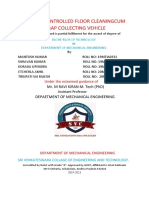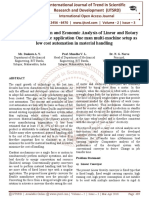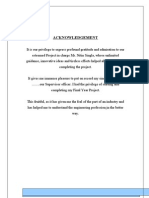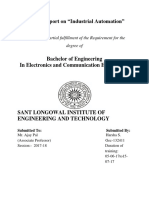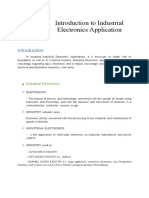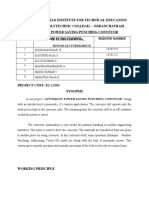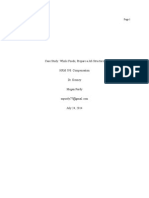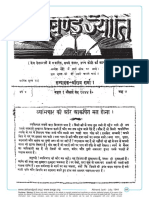0% found this document useful (0 votes)
146 views24 pagesThesis - Final. Chapter 1 and 2
This document appears to be a research paper submitted by five students - Elton John Cartel, Ryan Mark Cubillan, Ace Alter Dilag, Jerahmel Remo Jan Lovino, and Jeadel Faith Monton - to the Mechanical Engineering Department at Technological University of the Philippines Visayas in partial fulfillment of requirements for a Bachelor of Science in Mechanical Engineering degree. The paper acknowledges various individuals who provided support and guidance during the research. It is dedicated to God, their families, and their university. The introduction provides background on automation and automated guided vehicles, and establishes the problem addressed by the research which is to evaluate the efficiency of a material handling system using automated guided vehicles at an electronics company in Lag
Uploaded by
kent bediaCopyright
© © All Rights Reserved
We take content rights seriously. If you suspect this is your content, claim it here.
Available Formats
Download as DOCX, PDF, TXT or read online on Scribd
0% found this document useful (0 votes)
146 views24 pagesThesis - Final. Chapter 1 and 2
This document appears to be a research paper submitted by five students - Elton John Cartel, Ryan Mark Cubillan, Ace Alter Dilag, Jerahmel Remo Jan Lovino, and Jeadel Faith Monton - to the Mechanical Engineering Department at Technological University of the Philippines Visayas in partial fulfillment of requirements for a Bachelor of Science in Mechanical Engineering degree. The paper acknowledges various individuals who provided support and guidance during the research. It is dedicated to God, their families, and their university. The introduction provides background on automation and automated guided vehicles, and establishes the problem addressed by the research which is to evaluate the efficiency of a material handling system using automated guided vehicles at an electronics company in Lag
Uploaded by
kent bediaCopyright
© © All Rights Reserved
We take content rights seriously. If you suspect this is your content, claim it here.
Available Formats
Download as DOCX, PDF, TXT or read online on Scribd
/ 24


